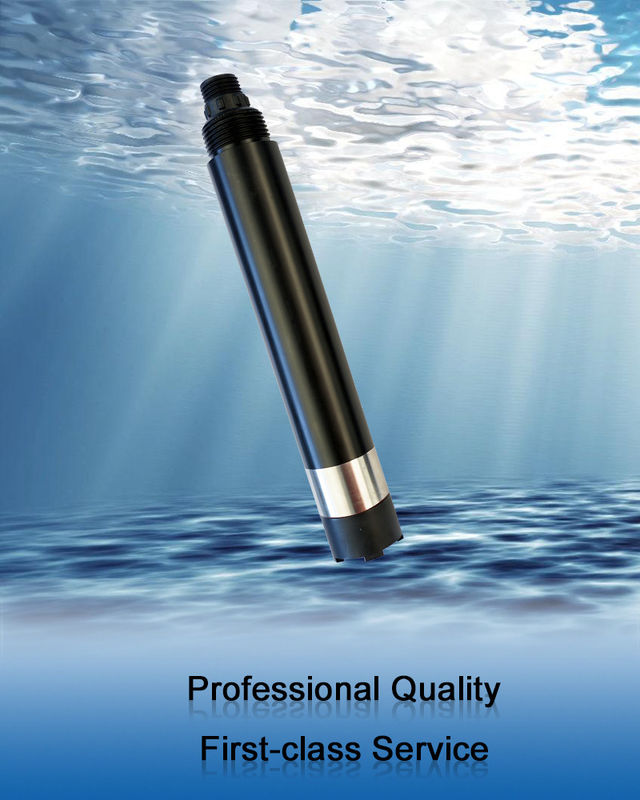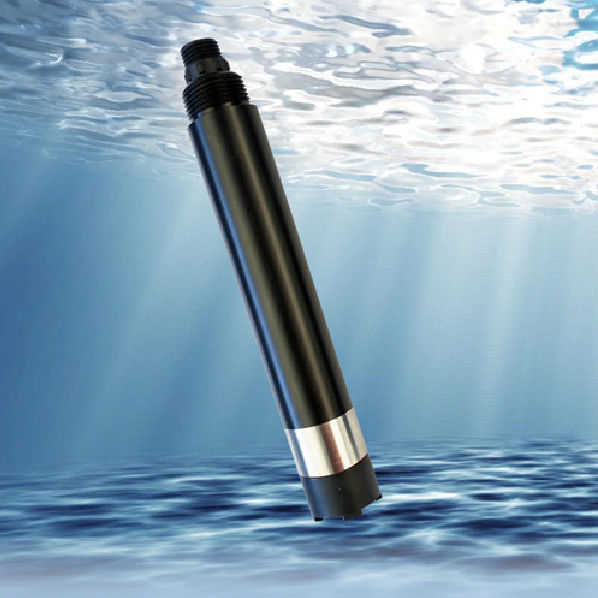KFDO310 Online Fluorescence Dissolved Oxygen Sensor No Electrolytes No Polarization No Need To Consume Oxygen
KFDO310 integrated on-line fluorescence dissolved oxygen sensor is designed and made based on the quenching principle of excited fluorescence of specific substances in physics. The blue light from the light-emitting diode illuminates the fluorescent material on the inner surface of the fluorescent cap. The fluorescent material on the inner surface is excited and emits red light. By detecting the phase difference between the red light and the blue light, and comparing it with the internal calibration value, the concentration of oxygen molecule can be calculated, and the final value can be output by temperature automatic compensation.
No electrolytes, no polarization
No need to consume oxygen, not affected by the flow rate
Built-in temperature sensor, automatic temperature compensation
Free from chemicals like sulfides
Small drift, fast response, more accurate measurement
Maintenance-free, long service life, lower use cost
Fluorescent caps are easy to replace
RS-485 interface, Modbus-RTU protocol
| Model number |
KFDO310 |
| Measuring principle |
fluorescence |
| Range |
0ー20 mg/L (0ー200% saturation, 25 °C) |
| Resolution |
0.01 mg/l, 0.1 °C |
| Precision |
± 2% f.s. , ± 0.5 °C |
| Temperature compensation |
Automatic temperature compensation (PT1000) |
| Output mode |
RS-485 bus, Modbus-RTU protocol |
| Working conditions |
0ー45 °C, < 0.2 mpa |
| Storage temperature |
- 5 ~ 65 °C |
| Installation mode |
Immersion mounting |
| Cable length |
5 meters, other length can be customized |
| Power consumption |
< 0.05 W |
| Power supply |
12 ~ 24 VDC ± 10% |
| Protection level |
IP68 |
| Calibration |
Two-point calibration |
| Fluorescent cap life |
Guaranteed Use for one year (under normal use) |
| Material for sensor housing |
Pom and 316L stainless steel |


The temperature sensing part should be immersed below the liquid surface to avoid collision with the film head surface. The head part of the membrane should be free from sediment.
Tips:Measuring Dissolved Oxygen
Dissolved Oxygen Measurement Methods
measuring_dissolved_oxygen_3_methods
Dissolved oxygen can be measured by colorimetry, a sensor and meter or by titration.
There are three methods available for measuring dissolved oxygen concentrations. Modern techniques involve either an electrochemical or optical sensor. The dissolved oxygen sensor is attached to a meter for spot sampling and laboratory applications or to a data logger, process monitor or transmitter for deployed measurements and process control.
The colorimetric method offers a basic approximation of dissolved oxygen concentrations in a sample. There are two methods designed for high-range and low-range dissolved oxygen concentrations. These methods are quick and inexpensive for basic projects, but limited in scope and subject to error due to other redoxing agents that may be present in the water 27.

 Your message must be between 20-3,000 characters!
Your message must be between 20-3,000 characters! Please check your E-mail!
Please check your E-mail!  Your message must be between 20-3,000 characters!
Your message must be between 20-3,000 characters! Please check your E-mail!
Please check your E-mail! 


